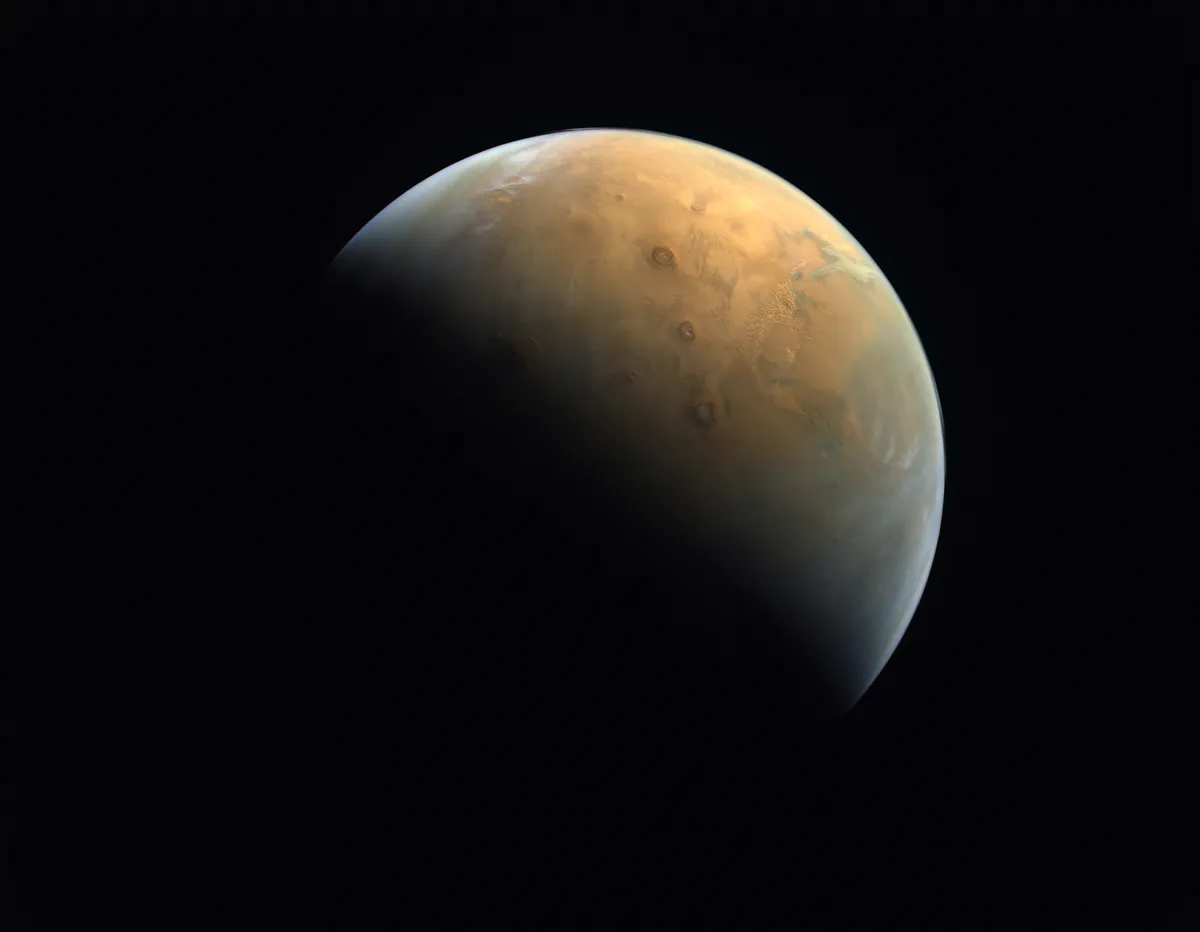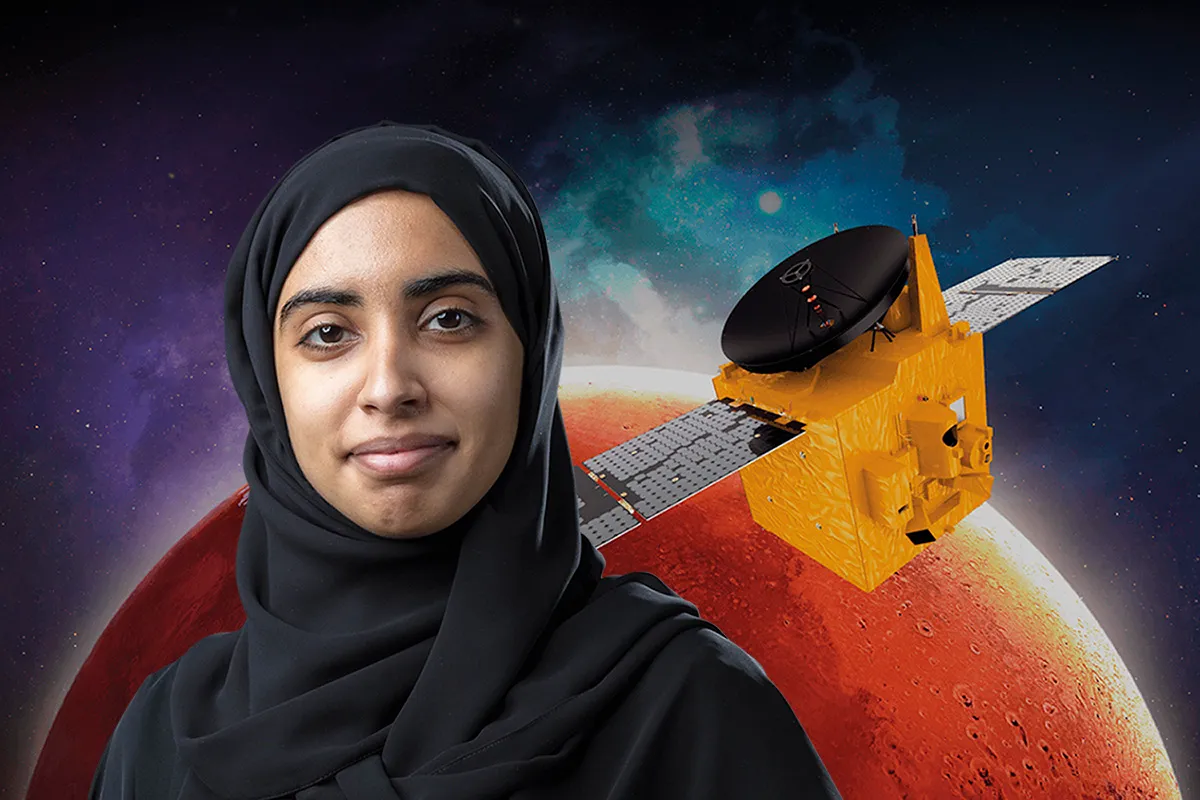
The United Arab Emirates' Hope probe has returned its first image of Mars, following its arrival at the Red Planet at 20:36 UTC on 10 February 2021.
Hope has arrived at Mars ahead of NASA's new Perseverance rover, which is due to land on Mars on 18 February 2021. Both are part of a new fleet of Mars missions launched in 2020.
This first image by the Hope probe was taken with the EXI instrument, 24,700km above surface of the planet. It reveals Mars's North Pole in the upper-left portion, while Olympus Mons, the largest volcano in the Solar System, is seen lit by early morning sunlight in the centre.
The three more prominent volcanoes visible in the image are Ascraeus Mons, Pavonis Mons, and Arisia Mons, and to the east (right) is Noctis Labyrinthus and the Valles Marineris system of Martian canyons.
Listen to our podcast interview with the Hope mission science lead Hessa Rashid Al Matroushi (pictured below)

Also visible in Hope's first image of Mars are ice clouds over the planet's southern highlands (lower right) and clouds appearing above the surface of the planet (at the very top and middle right), contrasted against the darkness of space.
Already, it seems, the Hope probe is delivering on its promise to study the Martian atmosphere and give planetary scientists a means to improve weather forecasting on Mars, including data on the notorious Martian winds. Data from the Hope mission could also reveal how the Red Planet has evolved over time.
The Hope probe is about the size of a small car and is fitted with two solar panels. Hope launched on 19 July 2020 and now that it's arrived at Mars, will orbit the planet once every 55 Earth days.
Studying Mars's atmosphere should shed light on how matter and energy moves between the atmospheric layers, and could provide clues as to how Mars went from the warm, wet planet it once was to the cold, dry world we know it as today.
Image stats
Observatory Hope probe
Image capture date 10 February 2021
Image credit MBRSC/UAE Space Agency
